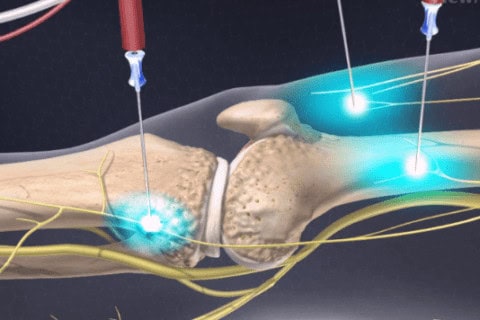All you need to know about using radiofrequency for pain treatment.
Singapore clinics have applied radiofrequency in neurotomy, which is an established method for treating pain. It is a minimally invasive procedure that can be conducted during the day without an overnight stay.
WHAT IS IT?
Radiofrequency ablation for pain treatment in Singapore involves the use of radio waves to treat specific nerves. This inhibits the nerves and prevents them from sending out pain signals, providing relief from chronic pain that has not been/cannot be alleviated through other means, like physiotherapy, medications, or surgery. [1] More than 70% of people that receive radiofrequency ablation experience pain relief. [2] The pain relief can last anywhere from 6-12 months, and in certain cases, the effects may even last for years.[3]
HOW IS IT DONE?
Before you can undergo radiofrequency ablation for pain treatment in Singapore, your doctor may conduct some tests on you to determine the nerve responsible for your pain, and check that these nerves can be targeted with this procedure. This will be done by injecting small amounts of numbing medicine to places where you feel pain, to see if your pain significantly reduces. These same spots will be used for the radiofrequency ablation, such that the best outcome can be achieved from the procedure.
During radiofrequency ablation, a needle is inserted into the area where you are feeling the pain, through the skin to the nerves. The radio waves are then turned on there, as shown in the diagram. Most of the time, local anaesthesia will be administered to the site of the injection, and you will remain conscious during the surgery. This allows for frequent check-ins throughout the procedure so that we can determine the effectiveness of the radiofrequency treatment.

[4] Very often, radiofrequency ablation is done in conjunction with other imaging techniques (eg. CT/X-ray scans). This allows the doctor to better locate the site for the injection and guide the needle to the exact area where you feel pain.
After radiofrequency ablation, you may feel a bit of weakness or numbness at the site of insertion due to the local anaesthesia. This should only last a few hours. Following that, you should experience less pain than you did before the radiofrequency ablation.
WHEN SHOULD I GET RADIOFREQUENCY ABLATION?
Most commonly, radiofrequency ablation is used to treat lower back pain, as well as hip, neck, and knee pain, with the aim of reducing the discomfort you feel. Arthritis pain can also be relieved using this technique. Do note that this is not a permanent solution to chronic pain, but it can grant you comfort and a better quality of life.
PROS OF RADIOFREQUENCY FOR PAIN TREATMENT, SINGAPORE
- Day surgery, no need for overnight stay post-surgery
- Low-risk surgery that is very safe
- Effective in providing relief from pain for a long time
- Can resume normal daily activities after 24 hours
RISKS OF RADIOFREQUENCY FOR PAIN TREATMENT, SINGAPORE
- Infection and bleeding at the site of insertion (rare)
If you are trying to find a place that offers radiofrequency ablation for pain treatment, Singapore Vascular Interventional Centre is able to provide this for you! Feel free to book an appointment with us today to consult our specialists, Dr. Benjamin Chua and Dr. Manish Taneja.
Contact us with the details below:
6694 6270 (Call)
9898 3595 (WhatsApp)
en*****@sg***********.com (Email)
Novena Specialist Centre #06-08, 16-19
8 Sinaran Drive, Singapore 307470
REFERENCES
[1]https://www.mayoclinic.org/tests-procedures/radiofrequency-neurotomy/about/pac-20394931
[2]https://www.webmd.com/arthritis/radiofrequency-ablation
[3] https://my.clevelandclinic.org/health/treatments/17411-radiofrequency-ablation
[4] https://www.alleviatepainclinic.com/radiofrequency-ablation/cooled-radiofrequency-ablation/
